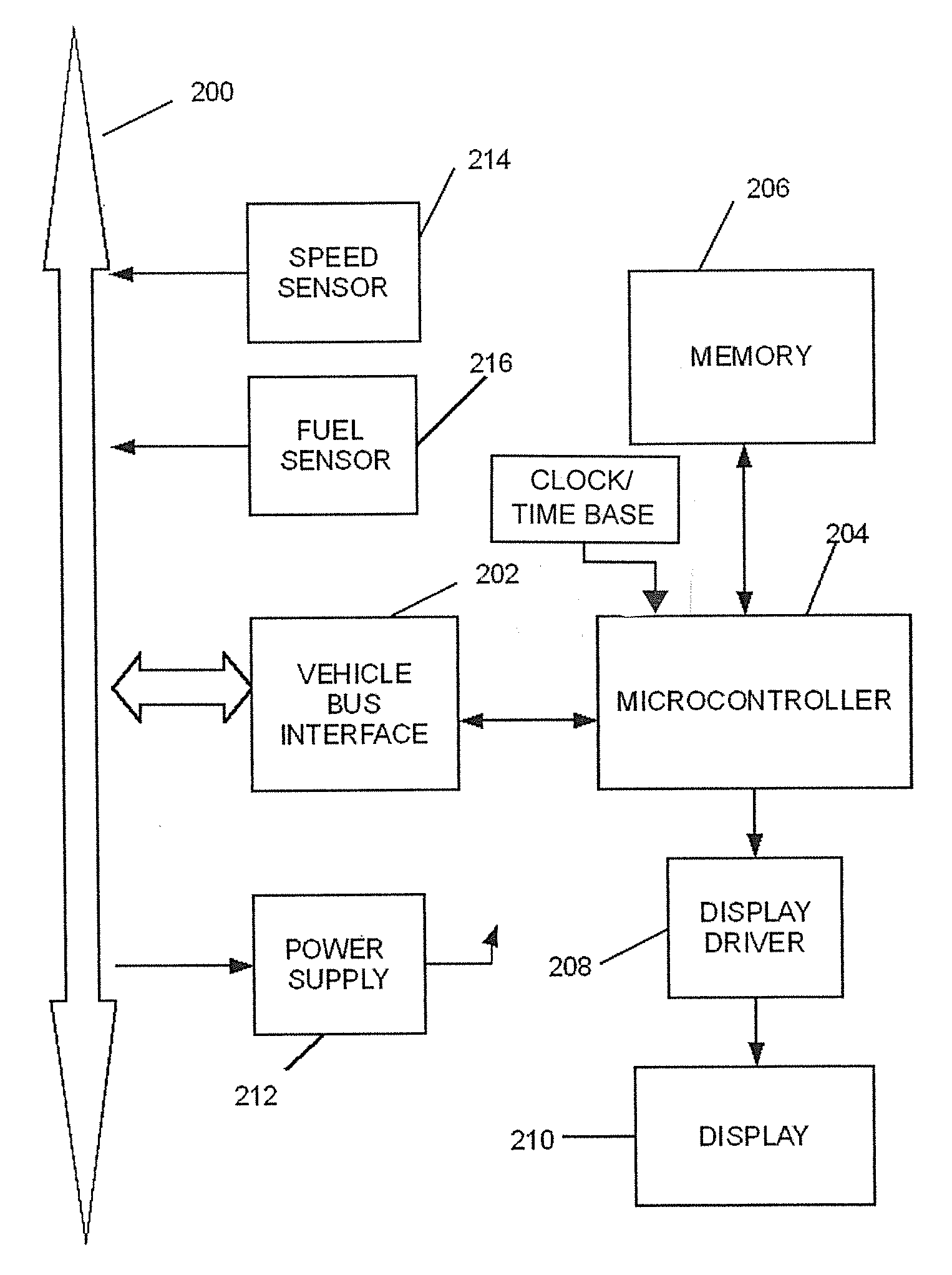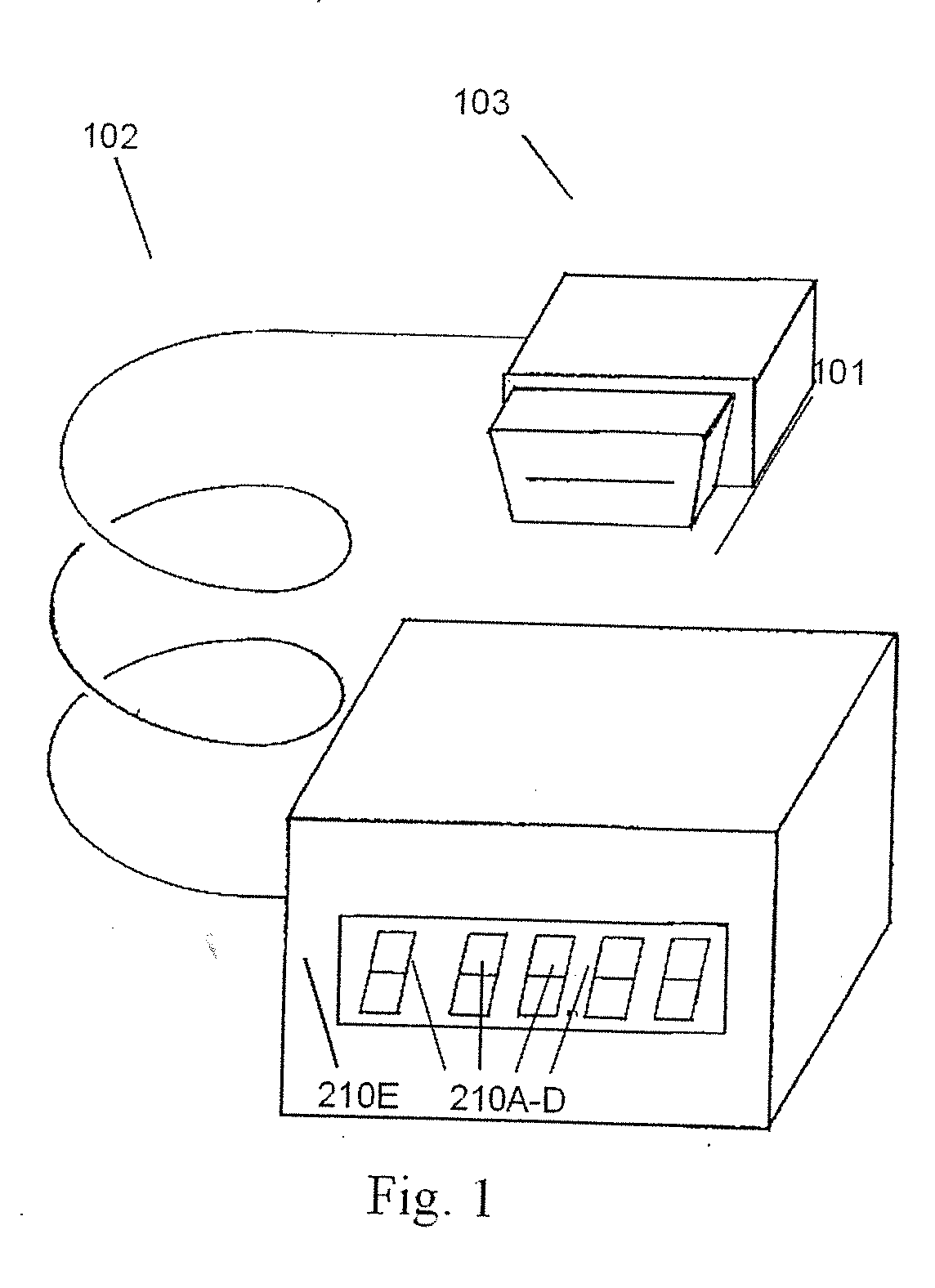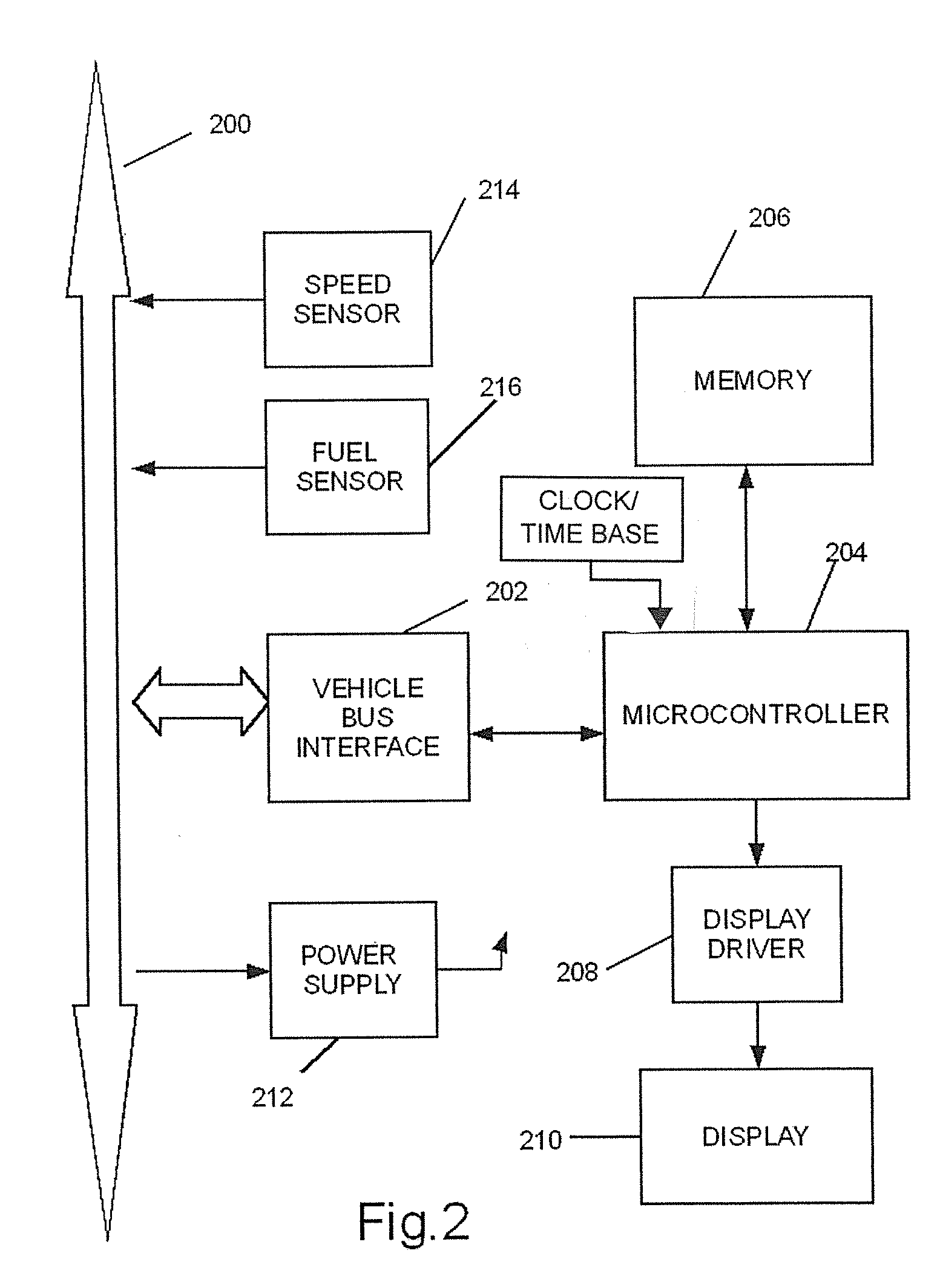Vehicle fuel cost-per-time display
a technology of fuel cost and display, applied in the field of motor vehicles, can solve the problems of inability to achieve the posted results in the real world, inability to drive in the more fuel-efficient way, and inability to achieve the posted results, etc., to achieve the effect of minimizing fuel consumption, minimizing cost, and avoiding operations that are excessively costly or wasteful
- Summary
- Abstract
- Description
- Claims
- Application Information
AI Technical Summary
Benefits of technology
Problems solved by technology
Method used
Image
Examples
Embodiment Construction
[0043]This invention resides in apparatus and methods to display information to guide operators of powered vehicles to minimize cost, minimize fuel consumption and waste, minimize the resulting emissions of pollutants and greenhouse gases, and do so in ways that are worth the operator's time. In one aspect, the invention provides a measure that relates the cost of operation of a vehicle to something of prime importance to most people—the value of their time. By providing a display in units that most people can relate to, namely, dollars or other currency per hour, people can compare vehicle operating cost to their wages or some other standard of the value of time such as the Federal Minimum Wage, and use such information to operate in more cost-effective ways.
[0044]In accordance with a different aspect, the invention computes and provides information for all important modes of vehicle operation. Conventional vehicles can only operate in four or five different modes; those being: 1) ...
PUM
 Login to View More
Login to View More Abstract
Description
Claims
Application Information
 Login to View More
Login to View More - R&D
- Intellectual Property
- Life Sciences
- Materials
- Tech Scout
- Unparalleled Data Quality
- Higher Quality Content
- 60% Fewer Hallucinations
Browse by: Latest US Patents, China's latest patents, Technical Efficacy Thesaurus, Application Domain, Technology Topic, Popular Technical Reports.
© 2025 PatSnap. All rights reserved.Legal|Privacy policy|Modern Slavery Act Transparency Statement|Sitemap|About US| Contact US: help@patsnap.com



